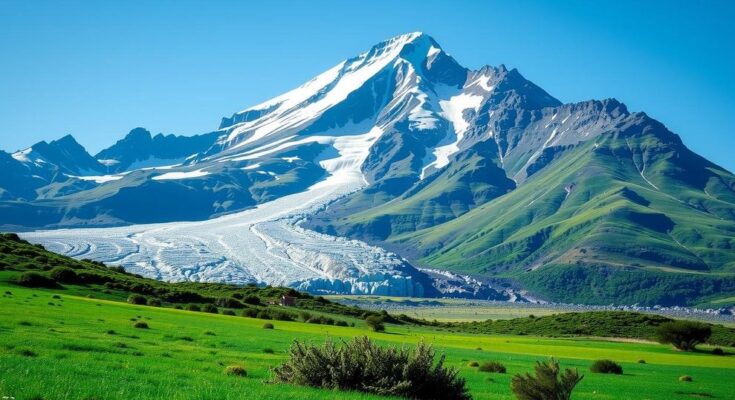Mount Kenya’s glaciers, including the Lewis Glacier, are melting rapidly due to climate change. Guide Charles Kibaki Muchiri, with 25 years of experience, observes significant changes in the landscape from snow and ice to brown rock, underscoring the urgency of addressing such environmental issues.
Mount Kenya, Africa’s second-highest mountain, is experiencing severe glacial melt due to climate change. Charles Kibaki Muchiri, a seasoned guide with nearly 25 years of experience, has witnessed this striking transformation firsthand. He notes how the renowned Lewis Glacier has rapidly lost its ice cover, leaving behind brown rock where glaciers once thrived. Muchiri’s observations highlight the alarming speed at which these natural landscapes are changing, as he guides numerous hikers through the breathtaking terrain situated at 5,000 meters (16,400 feet) above sea level.
The rapid melting of Mount Kenya’s glaciers exemplifies the impacts of climate change on iconic landscapes. Through the insights of guide Charles Kibaki Muchiri, we understand how crucial it is to address environmental changes that threaten such beautiful natural wonders.
Original Source: www.dailygazette.com




